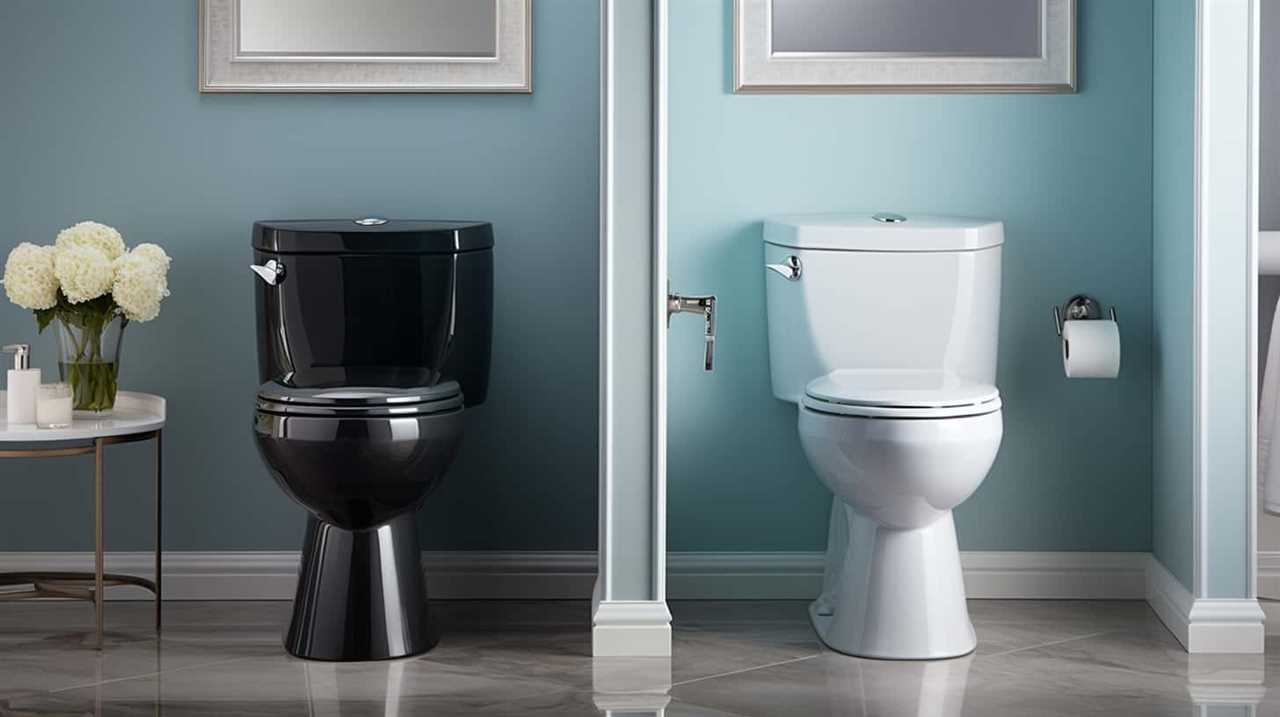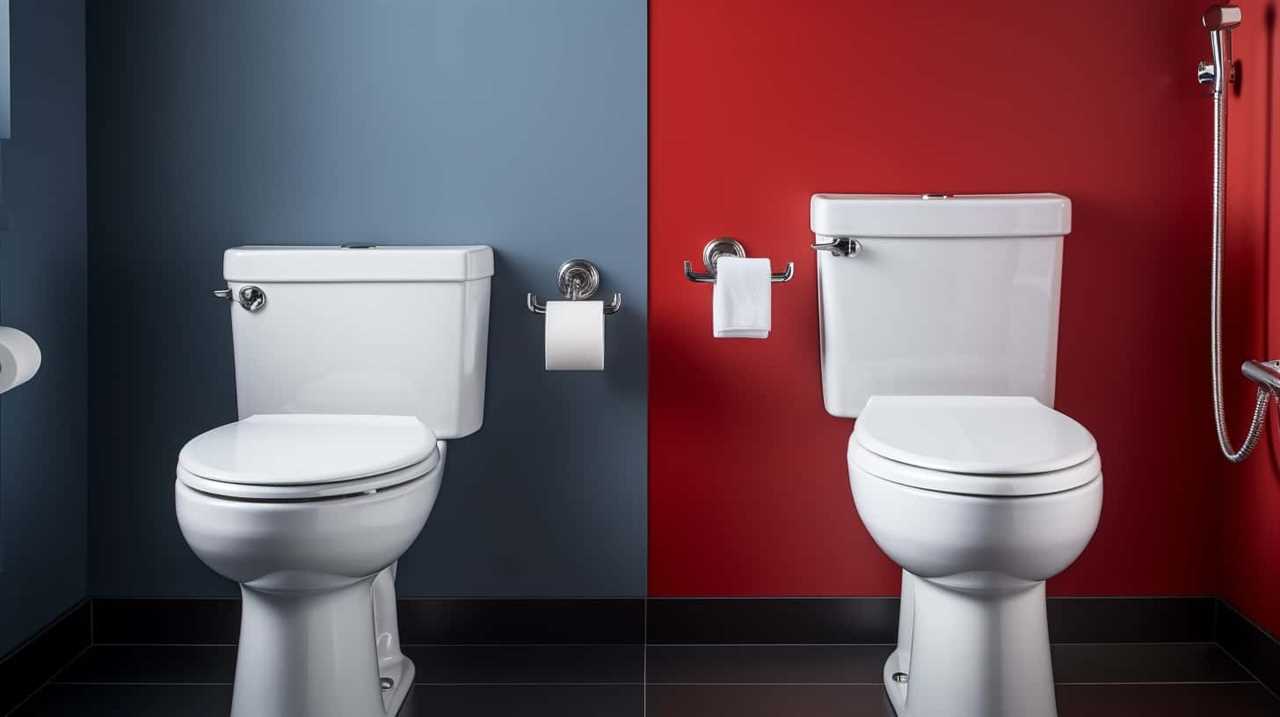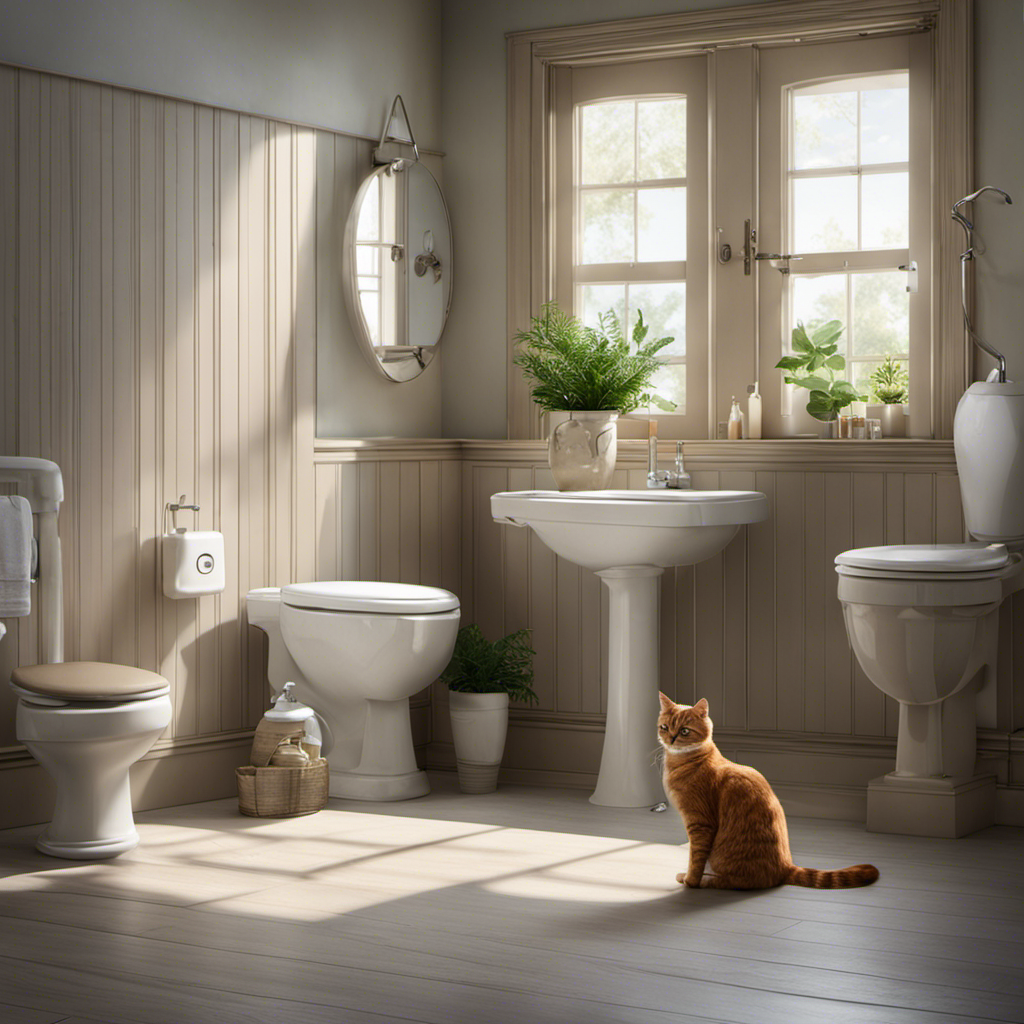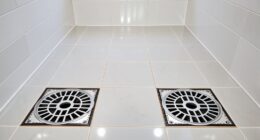Venturing into the realm of toilet flushing raises an important inquiry: how many liters are consumed with each flush?
Join us on this journey as we explore different toilet types, their water usage, and the impact of regulations on water consumption.
With our technical and informative approach, we aim to equip you with the knowledge needed to reduce water waste and achieve mastery over your toilet’s efficiency.
Let’s delve into the depths of flushing mechanisms and unravel the secrets of water usage.
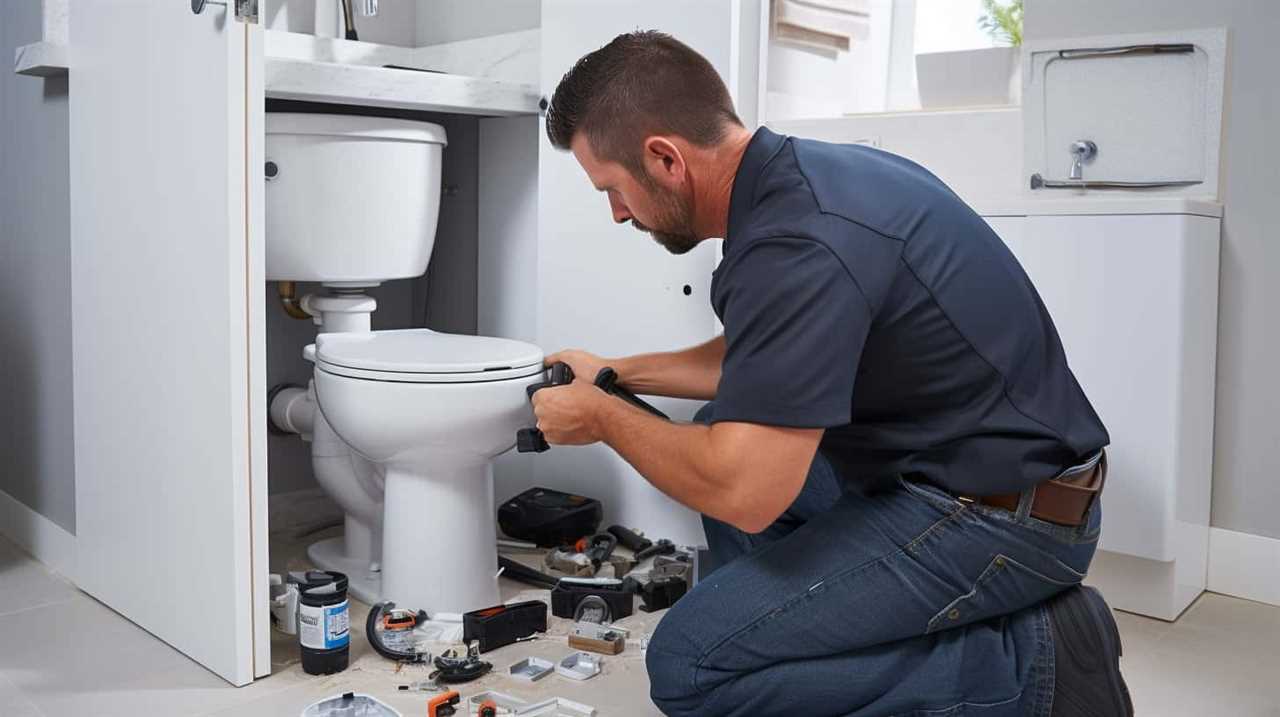
Key Takeaways
- Traditional toilets use around 13 liters of water per flush.
- Modern dual-flush toilets can reduce water consumption to as low as 3 liters per flush.
- Pressure-assisted toilets use air pressure to enhance flushing power, reducing water usage.
- Different toilet types can vary significantly in their water usage.
Toilet Types and Water Usage
We have found that different toilet types can vary significantly in their water usage. Toilet technology advancements have played a crucial role in reducing the environmental impact of excessive water usage.
Traditional toilets typically use around 13 liters of water per flush, which can contribute to wastage. However, modern toilets have been designed with water conservation in mind. Dual-flush toilets, for example, provide users with the option to choose between a full flush and a half flush, depending on their needs. This innovative feature has helped to decrease water consumption to as low as 3 liters per flush.
Additionally, pressure-assisted toilets use air pressure to enhance flushing power, reducing the amount of water required.
These advancements in toilet technology not only save water but also contribute to a more sustainable and eco-friendly future.
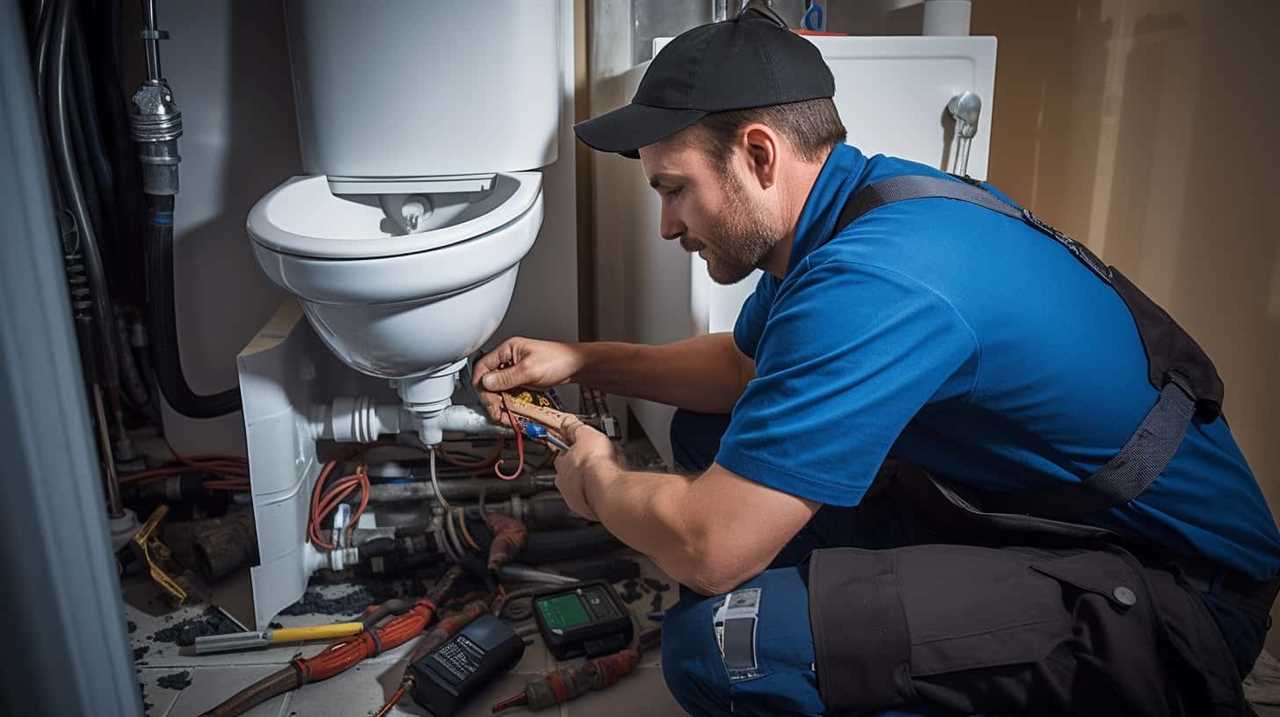
Flushing Mechanisms and Water Efficiency
Our research on toilet flushing mechanisms and water efficiency has revealed some interesting findings. When it comes to toilet flush technology, there are several mechanisms that contribute to water efficiency. Here are some key points to consider:
- Dual flush toilets: These toilets offer two flush options, typically a full flush for solid waste and a half flush for liquid waste. This allows for more control over water usage.
- Pressure-assisted toilets: These toilets use compressed air or water to create a powerful flush, reducing the amount of water needed.
- Gravity flush toilets with adjustable water levels: These toilets allow users to adjust the water level in the tank, providing the right amount of water for an effective flush.
- Water-saving flush valves: These valves regulate the amount of water released per flush, reducing water consumption.
Impact of Regulations on Water Consumption
With the implementation of regulations, the impact on water consumption in toilets can be significant. As concerns about water scarcity and conservation grow, governments and organizations have introduced regulations to reduce the amount of water used in flushing toilets. These regulations have led to the development of water-saving technologies in toilets, which are designed to minimize water consumption without compromising performance. By incorporating features such as dual-flush mechanisms, low-flow toilets, and pressure-assisted flushing, these technologies have proven to be effective in reducing water usage.
Below is a table showcasing some examples of water-saving technologies in toilets:
| Technology | Description | Water Savings |
|---|---|---|
| Dual-flush mechanism | Allows for a choice of flush volume | Up to 50% compared to standard |
| Low-flow toilets | Uses less water per flush | Up to 20% compared to standard |
| Pressure-assisted flushing | Utilizes air pressure to enhance flushing | Up to 30% compared to standard |
These regulations and water-saving technologies are essential in addressing the impact of water scarcity on toilet design and promoting sustainable water usage. By implementing these measures, individuals and communities can contribute to conserving water resources while maintaining the functionality and hygiene of toilets.

Factors Affecting Water Usage in Flushes
Several factors impact the amount of water used in toilet flushes. Understanding these factors is crucial for implementing water-saving technologies and promoting water conservation efforts. Here are the key factors to consider:
- Flush volume: The volume of water released during a flush directly affects water usage. Traditional toilets typically use 6-7 liters per flush, while newer and more efficient models can use as little as 3-4 liters.
- Flush type: Different flush mechanisms, such as gravity-fed or pressure-assisted, can influence water usage. Gravity-fed toilets rely on the force of gravity to initiate the flush, while pressure-assisted toilets use compressed air or water to enhance the flushing power, reducing the need for excessive water.
- Toilet age and condition: Older toilets may have worn-out components and outdated designs, leading to inefficient flushing and higher water consumption. Regular maintenance and upgrading to newer models can significantly reduce water usage.
- User behavior: User habits, such as flushing unnecessarily or using excessive toilet paper, can contribute to water wastage. Promoting awareness and education on responsible flushing practices can help conserve water.
Tips for Reducing Water Waste in Toilet Flushing
To reduce water waste in toilet flushing, we can employ several simple yet effective strategies.
One option is to invest in water-saving toilets, which are designed to use less water per flush compared to traditional toilets. These toilets often feature dual-flush mechanisms, allowing users to choose between a lower volume flush for liquid waste and a higher volume flush for solid waste.
Another way to conserve water is by implementing do-it-yourself (DIY) toilet water conservation tips. For instance, placing a displacement device, such as a brick or a water-filled plastic bottle, in the toilet tank can reduce the volume of water used per flush.

Additionally, regularly checking for leaks and promptly fixing them can prevent unnecessary water waste.
Frequently Asked Questions
How Does the Water Pressure Affect the Amount of Water Used in Flushing a Toilet?
Water pressure directly affects the amount of water used in flushing a toilet. Higher water pressure can result in more water being used, while lower water pressure can lead to less water being used, thus impacting water efficiency.
What Are Some Common Problems With Flushing Mechanisms and How Can They Affect Water Efficiency?
Common flushing mechanism problems can greatly impact water efficiency. By addressing issues such as leaks, clogs, or faulty parts, we can ensure that flushing mechanisms operate optimally, reducing water wastage and promoting sustainability.
Are There Any Alternative Flushing Mechanisms Available That Use Less Water?
Are there alternative flushing mechanisms available that use less water? Yes, there are water-saving toilet options that utilize innovative flushing mechanisms to reduce water consumption. These alternatives help conserve water without compromising performance.
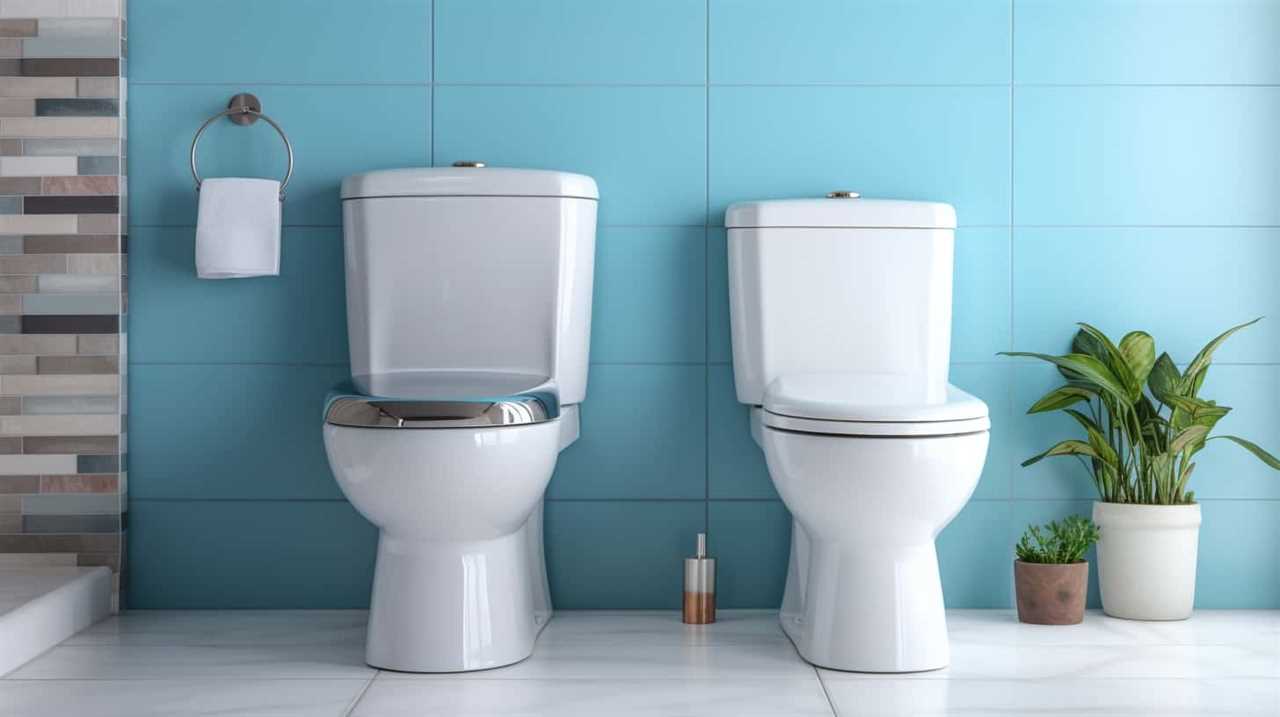
Can the Type of Toilet Bowl or Shape Affect the Amount of Water Used in Flushing?
Toilet bowl design and material can impact water consumption during flushing. Different shapes and materials may require different amounts of water to effectively flush waste. Understanding these factors can help optimize water usage in toilets.
Are There Any Local or Regional Regulations That Restrict the Amount of Water Used in Toilet Flushing?
Are there local or regional regulations on water efficiency in toilet flushing? Do these regulations restrict the amount of water used? Yes, there are regulations in place to ensure water conservation and promote efficient flushing.
Conclusion
In conclusion, understanding the water usage in toilet flushing is crucial for conserving this valuable resource. By considering the type of toilet, the flushing mechanism, and the impact of regulations, we can make informed decisions to reduce water waste.
Taking simple steps like repairing leaks and using water-saving devices can significantly contribute to water conservation efforts.

So let’s embark on this journey of responsible water usage, and together, we can paint a greener, more sustainable future.

